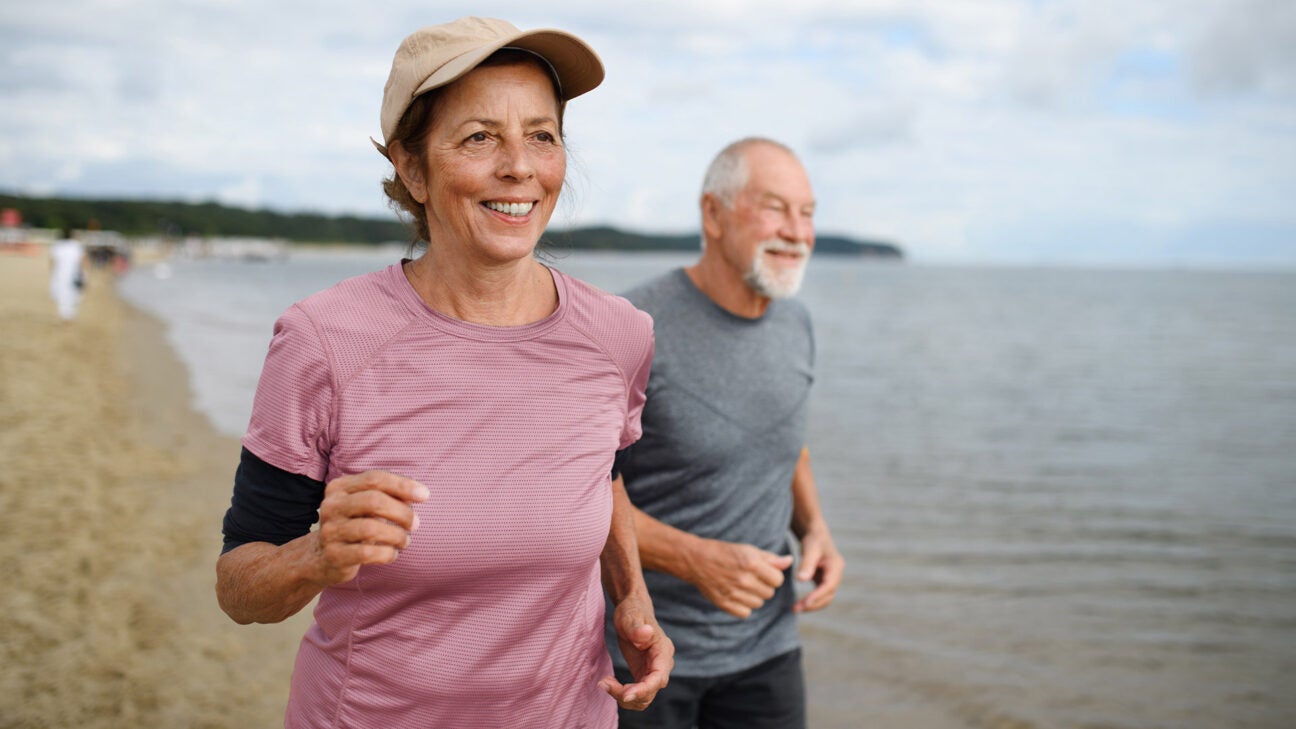
- Researchers say running may not increase the risk of knee and hip osteoarthritis, contrary to common belief.
- In fact, experts say running may improve joint health by increasing lubrication.
- They note, though, that running should be done at a level appropriate for a person’s overall physical health, their age, and their weight.
Conventional wisdom tells us that running, as a high-impact activity, will inevitably take its toll on the knees and hips, potentially causing osteoarthritis in the long run.
A new study, however, suggests that this might not be the case.
In research being presented at the annual meeting of the American Academy of Orthopaedic Surgeons, a team from Northwestern University in Illinois conducted a survey of nearly 4,000 participants in the Chicago Marathon and found that recreational running was not associated with an increased risk of knee or hip osteoarthritis.
“I think one of our main takeaways from this study is that active joints are healthy joints,” said Dr. Matthew Hartwell, an orthopedic surgeon at the University of California San Francisco and a lead author of the study (Hartwell was affiliated with Northwestern at the time the study was conducted).
“For this group of marathon runners in this study, the risk factors for arthritis were not different than those in everyday individuals who do not run marathons, including increasing age, BMI (body mass index), a family history of arthritis, prior injuries to the hip and/or knee that prevented running, or prior surgery on the hip and/or knee,” Hartwell explained.
The study has not yet been published in a peer-reviewed journal.
Does running help or hinder joint health?
Osteoarthritis affects more than 32 million adults in the United States, making it the most common form of arthritis.
It occurs when there’s a breakdown of cartilage within the joints, causing degeneration of the underlying bone. As a degenerative condition, it can’t be reversed and generally gets worse with time.
Because it commonly occurs in the knees and hip joints – two areas impacted by running – it’s been assumed by some that the condition can be caused, and exacerbated by, running.
However, the Arthritis Foundation says this isn’t necessarily the case – and the study provides new insights on the relationship between running and osteoarthritis.
Hartwell told Healthline that he and his colleagues were not surprised by some of their findings – notably, the fact that running did not appear to be a risk factor for osteoarthritis.
On the other hand, they were surprised at how many runners reported that they’d been advised to decrease their workouts.
“Around 1 in 4 runners were told that they needed to reduce the amount they run, signifying that there is continued dogma in the healthcare community that running is bad for your joints,” he said.
One theory posits that running can help keep joints healthy by keeping them continuously lubricated. Joints contain a lining, synovium, that helps maintain the lubricating fluid within the joint, which is known as synovial fluid.
“One proposed theory regarding the benefit of running is the impact it has on maintaining a healthy synovial fluid environment, low in anti-inflammatory mediators that can progress the breakdown of the joint,” said Hartwell.
“There is a complex interplay between the health of the synovial fluid and the impact of joint mechanics on the progression of osteoarthritis, and many other factors not mentioned also impact the breakdown, but what we can conclude from this study is that in this cohort of marathon runners, running-related history was not associated with people who reported a history of hip and/or knee arthritis,” he added.
Load management is key to running
Dr. Kenton Fibel, a non-operative orthopedic surgeon and sports medicine specialist at Cedars-Sinai Kerlan-Jobe Institute in Los Angeles as well as the medical director for the Anaheim Ducks of the National Hockey League, told Healthline that running is healthy – but it’s still important to be properly prepared.
“Different activities require different muscles and put different loads into different joints,” he explained. “So, for someone who’s going from, for example, cycling into running, I think it’s really important to make sure that they’re focusing on hip adductor strengthening, quad strengthening, things that will equip them to tolerate a higher load.”
Fibel also said that people with osteoarthritis often find that they can tolerate a certain amount of physical activity such as running, so long as they don’t overdo it.
“You don’t want to do too much too soon, so usually we’ll be working on strengthening so they can tolerate an increased load,” he said. “Then they can progress their mileage in a measured fashion so that they do not have any symptoms.”
Symptoms of osteoarthritis
For people who want to avoid osteoarthritis, there are a number of warning signs to be mindful of.
Fibel says that joint pain can often be more pronounced the day after a run than during the run itself.
“Some of the risk factors have to do with genetics or family history, sometimes it has to do with weight gain – obesity certainly puts more stress on the joints,” Fibel said. “These are all the risk factors we look at. Some are ones that we can change and improve, some just can’t.”
In any event, a responsible running regimen is good for general fitness and shouldn’t be associated with an increased risk of osteoarthritis, he noted
“From this study, it appears that running itself is not predictive of people who report having arthritis, so we should not necessarily be discouraging our patients from running for the single notion that it will prevent them from developing arthritis,” said Hartwell.
Knee Osteoarthritis: Running May Not Increase Risk After All
Source: Pinoy Lang Sakalam



0 (mga) komento:
Mag-post ng isang Komento